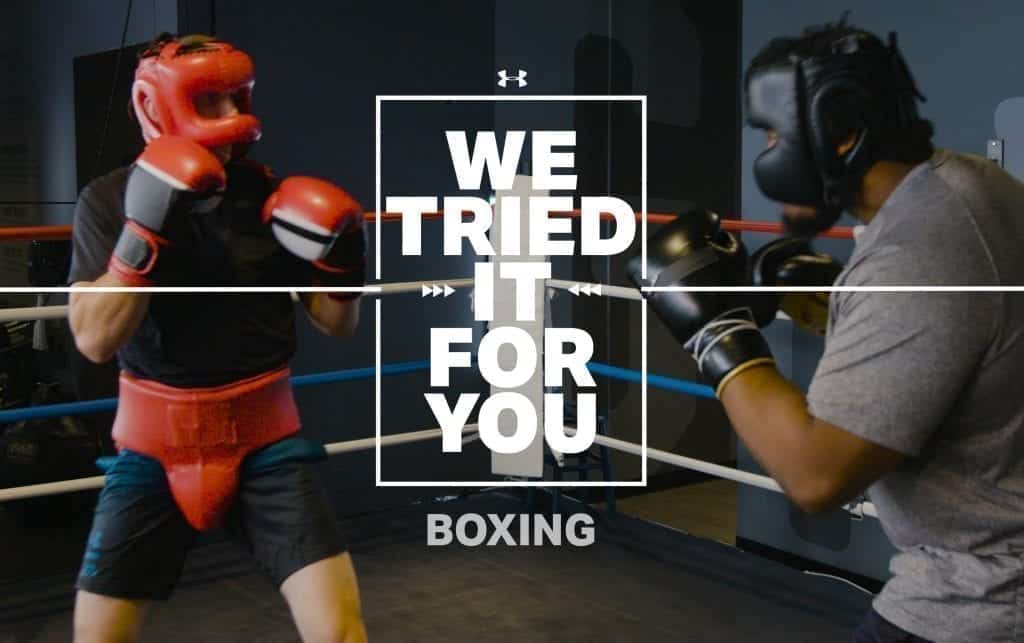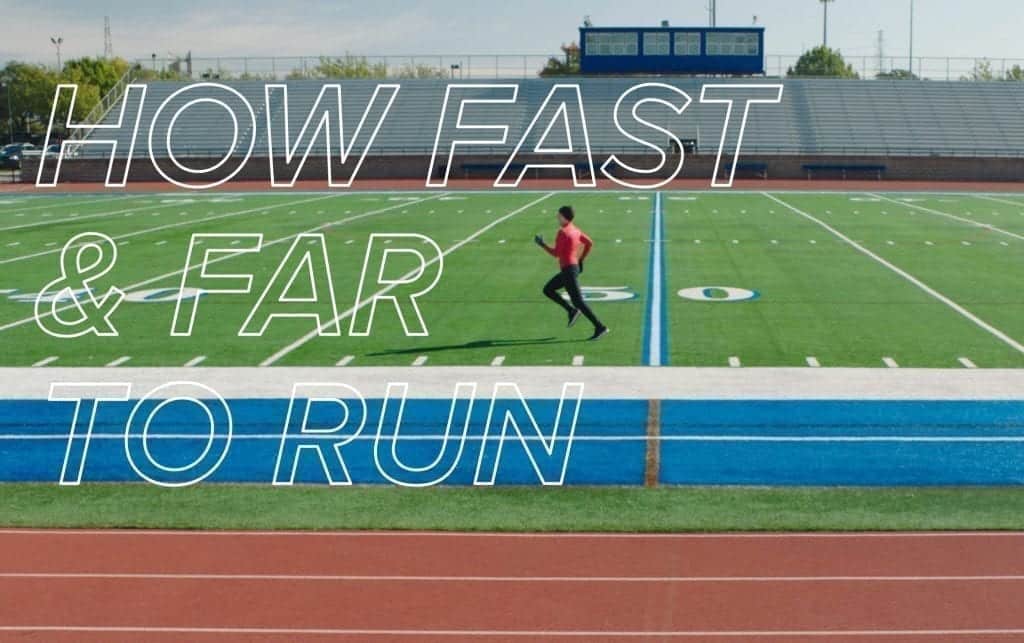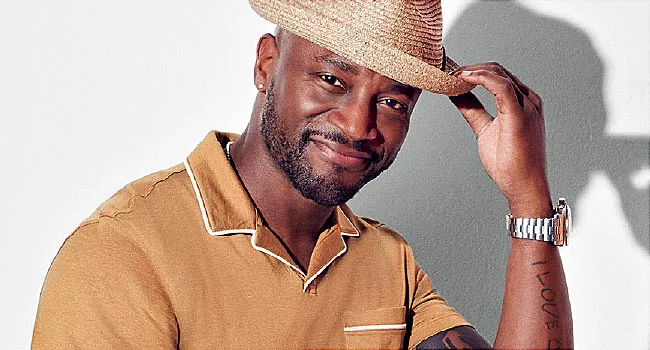from BBC News - Health https://bbc.in/2QbSikw
via IFTTT
The study included nearly 2,200 kids in 20 U.S. cities. One-third of them had consistent, age-appropriate bedtimes between ages 5 and 9, according to their mothers.

If you love dancing in your car, shower or kitchen, it’s time to try it as your new favorite source of cardio.
The post We Tried it For You: Hip Hop Dancing appeared first on Under Armour.
The highest risk is among older teens, who account for 88 percent of those who died during the time of the study, the researchers found.

Boxing is more than hitting things really hard to get out frustration. Professional boxing coach Leyon has the tips to perfect your punch.
The post We Tried it For You: Boxing appeared first on Under Armour.

Nutrition (and timing it correctly) is a critical part of every runner’s training. Let our experts give you the rundown.
The post What to Eat, Drink & When appeared first on Under Armour.

Trapeze isn’t just for circus performers anymore. This activity takes strength, coordination and teamwork.
The post We Tried it For You: Flying Trapeze appeared first on Under Armour.

When it comes to running, there’s no such things as too little, too slow or too short. But if you eventually want to increase these things, these tips will help you get there.
The post How Fast & Far To Run appeared first on Under Armour.
Here we are at the end of December, and some of us are contemplating another chance for a fresh reboot. The infamous New Year’s resolutions are a common topic. Last year I wrote a blog post about an overall view of how to be successful when thinking about reaching a goal. Changing behavior is all about learning a new skill. Ultimately, you are teaching your brain that you can do a specific job, creating a new habit that eventually will be part of your weekly or daily routine. In a similar way that’s how we learn how to cook, and even how you learned to speak or walk. Acquiring a new habit requires a plan, practice, and reflection on how to improve. Let’s harness the teaching mode to make this learned skill part of your life in 2019.
“Start exercising” is what most of my patients say when I ask them what could make them healthier. Here is an effective way to incorporate physical activity into your weekly routine moving forward.
Do not skip any of the six steps. Make sure you write them down. Remember, this is a process.
For some people, just thinking about exercising creates undesirable memories and anxiety. Let’s first deal with the ingrained thoughts and emotions related to exercising. It will probably take you around 10 minutes to write this down. Writing is better than typing, so grab a piece of paper. Do you feel helpless? Do you feel you do not have any guidance? How did you feel when you were not able to follow through on your plans in the past? How do you feel about going to a gym? What did you learn from your past experiences? Reflecting on your feelings and emotions will help you deal with the barriers you may encounter. Failure to recognize and to be aware of these thoughts and feelings may be one of the reasons many have a hard time reaching their goals.
It is not because you need to exercise, but instead pin down why you want to start exercising. Having the reason you want to exercise written down is what you will revisit when you cannot get off of the couch. Is it because you want to be fit? Do you want to look better? Is it because you want to go on a trip where you will be walking several hours a day? Is it because you want to have less anxiety, or maybe you want to lower your blood pressure? If you are not sure of the reason why you want to do it, I would recommend more reflection, talking to your family and friends, or to your doctor. If you are not ready to make the change, I would suggest asking why. Why is exercising not that important? If you don’t move more, how do you see yourself 10 or 20 years from now? What do you want your health for? How do you see yourself after you start working out? What will you do when you feel stronger and healthier?
You can either write or type into a computer. If you type, make sure to print the program and put up in a place where you can see it every day. It can be your fridge, your office, a spot you pass frequently. Choose the exercise and how much time you will allot per week to do the task. Come up with a realistic plan to fit your schedule. Don’t create an unreasonable plan to work out an hour a day, five times a week starting January 1st if you are sedentary, have a full-time job, and still have to take care of your family when you get home. You are setting yourself up to fail. This is the biggest mistake I see when people are trying to incorporate a new habit. Failure can be very frustrating, and it is one of the main reasons New Year’s resolutions do not develop into habits. Take a look at your schedule and choose an exercise you enjoy and that is doable. It is okay to start walking at a fast pace 10 minutes twice a week, or do a seven-minute workout routine, but make sure you block out the time to do so.
Now that you have reflected on your emotions, written down the reasons why you want to start exercising, selected the type of exercise and the amount of time you will devote to get moving, let’s come up with a more detailed plan, so exercise is part of your routine in 2019.
Let’s say that you decided you will start walking at a fast pace for 20 minutes per week, two sessions of 10 minutes each. You eventually want to get to the standard recommendation of 150 minutes of moderate exercise per week, or 75 minutes of vigorous physical activity per week. You will do this very slowly, and it will take several months. To get there, you will adjust three variables: the amount of time per week (volume), the amount of rest you will have between sessions, and the intensity of the exercise. You will change only one variable at a time every two months. Remember that you are teaching your brain that you can do a particular activity. If you manipulate all three variables at the same time your brain gets confused. For example, if you want to change the volume (duration and distance), add 10% to 20% of the time to each of your two weekly sessions, walking at the same pace. Do not start to run (intensity) and add time all at once, for example. If you want to go a little faster instead, continue training twice a week for 10 minutes. If going faster is too subjective, consider buying a heart rate monitor and increase your heart rate by about 5% to 10% after each session. You could also reduce the amount of rest between your sessions, adding another 10-minute session in the middle of the week, using the same pace.
If you feel too tired midway through your exercise, there is a chance you are changing the variables too fast, and you could be overtraining. People who overtrain get injured and are less likely to continue the learning progress. You do not need to reach your goal too quickly; learning takes time. Slowly ramp up your routine, either increasing volume and intensity or reducing rest. After ramping up your workout for three sessions, just repeat the same workout for the fourth session. So for example. If on Day 1 you walk 10 minutes, Day 2 you go up to 12 minutes and Day 3 you walk for 14 minutes, on Day 4 just repeat the previous day, walking again for 14 minutes. That way you are teaching your brain that you know you can do that task well, without getting exhausted. For the fifth session, you can continue the ramp-up. Keep doing this system of four-session cycles where you increase one variable every three sessions and repeat the last one.
Incorporate the sense of accomplishment and how rewarding it was to do it. Hold onto these positive feelings for 10 to 20 seconds after the workout. It’s helpful to think about this throughout the day. You could even journal about these emotions. The more you think about and feel that sense of accomplishment throughout the day, the more brain connections it creates. You are teaching your brain about the importance of exercise and that you can actually do it. Think about the reasons why you are exercising. Does this make you feel good about yourself? Is this helping you deal with some medical problems you might have? Is this making you stronger? Do you have more energy to go on with your day or play with your kids?
It is through continuous practice and reflection that we learn everything in life. Being aware of your emotions, reflecting on your motivations, practicing the skill, making small changes, and improving what you already know is the recipe to make exercise part of your life moving forward. That’s how you adapt the brain to learn a new habit. That’s how you teach the brain to do that exercise for that amount of time at that specific intensity. Don’t give up — be aware of the feelings and emotions that might undermine your goals and objectives. January 1st is just another day in the calendar, you can try this any day of the year. Don’t wait for 2020 if your plan does not go as expected. Learning a new skill is a journey. Happy 2019 and best of luck.
The post 6 steps toward a successful exercise resolution appeared first on Harvard Health Blog.

As he looks forward to a new TV series, actor and author Taye Diggs talks about his family, health struggles, aging, and being a dad.
Like Alexander Hamilton, his famous Broadway theater role, Lin-Manuel Miranda pushes forward with relentless speed and bottomless good cheer, juggling multiple projects and committed outreach to people in need -- but he also finds time to just breathe.

While kayaking can be a great way to relax on calm water, taking it to the ocean will provide a whole new set of challenges.
The post We Tried it For You: Ocean Kayaking appeared first on Under Armour.
It turns out that eating causes the release of dopamine in your brain not once, but twice, German scientists report.
You might not have heard of Beachbody—but you know the programs. Founded in 1998, Beachbody is the creator of the nation’s most popular on-demand fitness and weight-loss solutions, including the P90X series, INSANITY, FOCUS T25, 21 Day Fix, Body Beast, PiYo, and Hip Hop Abs.
By bringing the best coaches and trainers in the business together with cutting-edge directors and video production facilities, Beachbody programs like P90X , INSANITY, and PiYo have changed the way Americans work out and get fit. No longer do we need to make time (or spend money) to go to the gym, or sign up for a class with a bunch of strangers. Now we can work out in the comfort and privacy of our own homes, on our own time, and at our own pace.
The 5 Fitness Commandments from the Creator of P90X
In celebration of the new year, right now Beachbody is offering a number of specials to get you with the program and get your body—and your life—back in shape. Through January 1, you can sign up for ALL Beachbody programs and all their requisite nutritional guides for just $99 a year! That’s 21 Day Fix, PiYo (Pilates/Yoga), INSANITY, CIZE, T25, P90X, P90X3 and more, for a full 12 months, for only $99. That’s about a third of what it costs to go to the gym for a whole year.
Beachbody’s extensive library of workout courses includes a wide variety of programs to help you reach your health and fitness goals, whether you want to lose weight, build muscle, or just live healthier. Each program combines challenging workouts with easy-to-follow diet guidelines, nutritional supplements, and an unparalleled customer service and peer support.
Not sure you’re ready to commit? Try Beachbody’s 30-Day Risk-Free Trial by clicking here.
The study included 20 PTSD patients, including two military veterans and several civilian women who had been sexually assaulted. All had active suicidal thoughts, some had previously attempted suicide, and most were taking antidepressants and/or had them prescribed for the study.